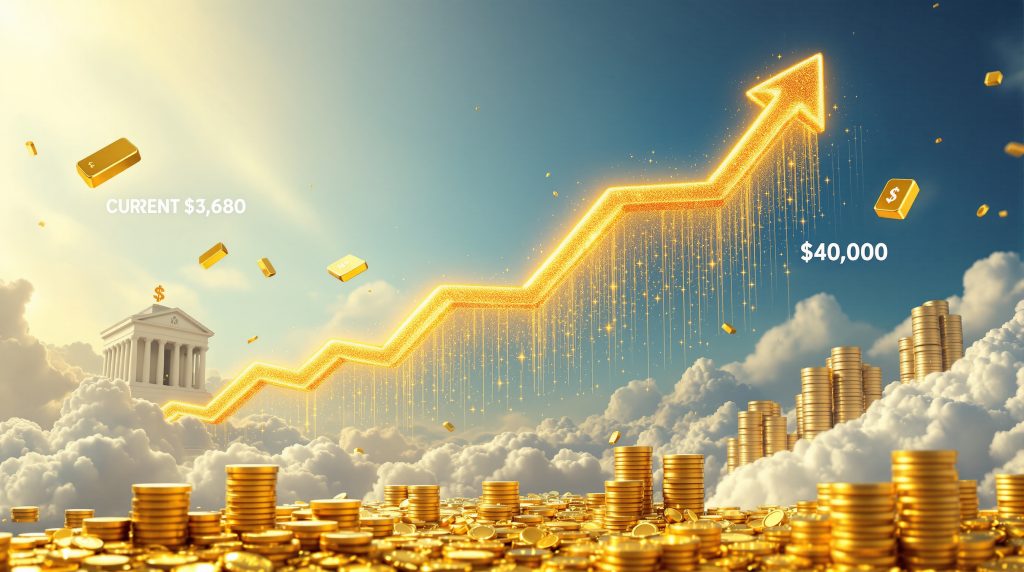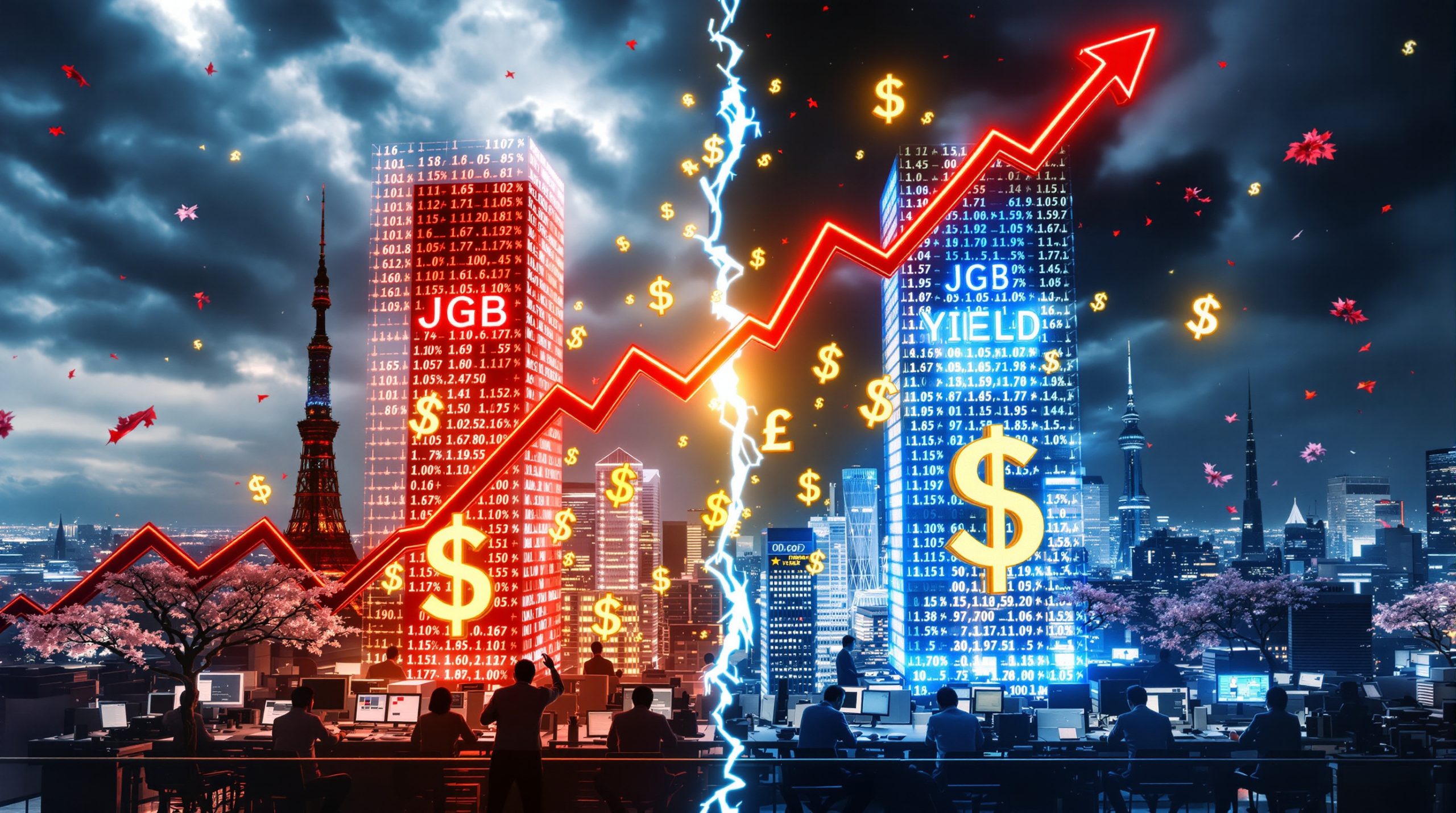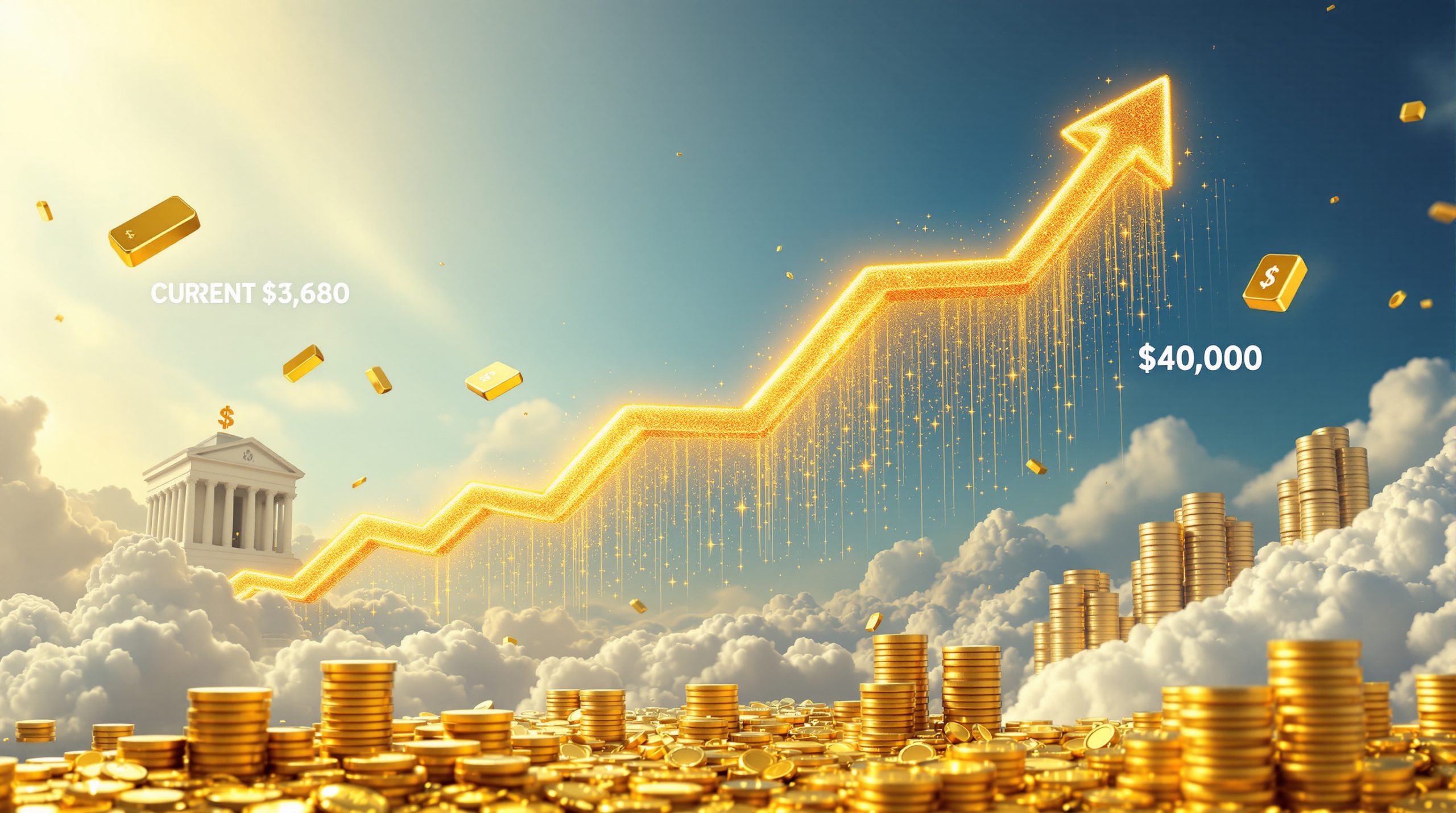Why Is Gold Experiencing a Temporary Pullback in Its Bull Run?
Gold's impressive rally has captured global attention in recent months, with the precious metal reaching consecutive record highs throughout 2025. Despite the strong upward momentum, market experts anticipate a healthy correction before the metal continues its ascent toward unprecedented price levels. This temporary pullback represents a natural part of the long-term bull cycle rather than a fundamental shift in market sentiment.
Current Market Position and Price Action
Gold has been trading in record territory in 2025, with prices currently around $2,630 per ounce according to the London Bullion Market Association. The yellow metal has posted impressive gains of approximately 27% year-to-date, following a similarly strong 27% increase in 2024 as reported by the World Gold Council.
Technical indicators currently suggest the market may be approaching overbought conditions after such a rapid price acceleration without sufficient consolidation periods. Historical patterns show that extended rallies typically include periodic pullbacks that help establish stronger foundations for subsequent price advances.
Market cycles naturally include periods of consolidation after rapid price appreciation. These phases typically create better entry points for investors who missed earlier opportunities.
The current gold market structure suggests limited price discovery has occurred in certain ranges, potentially creating volatility as the market determines appropriate valuation levels.
What Factors Are Driving Gold's Long-Term Bull Market?
Central Bank Purchasing Patterns
One of the most significant catalysts behind gold's structural bull market has been the unprecedented pace of central banks' gold strategy. According to the World Gold Council's Gold Demand Trends report, central banks purchased an impressive 483 tons of gold in the first half of 2025 alone.
This accelerated acquisition represents a continuation of the multi-year trend of substantial net central bank purchases, with emerging market institutions accounting for the majority of this demand. Countries have been actively diversifying away from traditional currency reserves, particularly amid heightened geopolitical uncertainties.
- China has continued expanding its gold reserves for 28 consecutive months
- Poland announced a strategic goal to double its gold reserves by 2026
- Several Middle Eastern central banks have significantly increased their allocations
- Turkey remains among the most aggressive buyers proportional to economic size
Monetary Policy Developments
The Federal Reserve's anticipated interest rate reduction cycle has been a key driver of gold's performance. Currently, the Fed has maintained rates at the 5.25-5.50% range, but market expectations for upcoming cuts remain fluid based on economic data according to the CME FedWatch Tool.
Lower interest rates generally support gold prices by reducing the opportunity cost of holding non-yielding assets. Additionally, concerns about monetary policy direction and central bank independence have contributed to increased safe-haven demand.
Investment Demand Dynamics
After a period of outflows in 2022-2023, gold ETFs have experienced a significant reversal, with net inflows of approximately $2.4 billion in Q2 2025 according to World Gold Council data. This shift signals renewed interest from institutional investors who are increasingly incorporating precious metals as part of their strategic asset allocation.
Retail investor participation has also reached multi-year highs, with physical gold products seeing strong demand globally. Financial institutions have responded by increasing their allocation recommendations to precious metals amid economic uncertainty.
Geopolitical and Economic Catalysts
Persistent international tensions continue to support safe-haven demand for gold. Regional conflicts, trade disputes, and shifting geopolitical alliances have prompted investors to seek assets with proven crisis-resistant qualities.
Beyond immediate geopolitical concerns, underlying economic uncertainties have driven risk-hedging strategies across investment portfolios. While official inflation data has shown some moderation, persistent price pressures in housing, services, and other sectors maintain gold's appeal as a record high gold inflation hedge.
Currency volatility has further enhanced gold's monetary stability appeal, with several major currencies experiencing significant fluctuations against the US dollar throughout 2025.
How Significant Will the Correction Be Before New Highs?
Technical Analysis Perspectives
Professional technical analysts generally expect a 5-10% retracement from peak levels before the next sustainable advance. This would align with historical gold market behavior, where corrections have typically found support at previous resistance points.
Moving average convergence suggests a consolidation phase may be necessary before the next leg higher. Volume patterns indicate a temporary exhaustion of buying pressure, which typically precedes healthy corrections.
Historical Correction Patterns
When examining previous gold bull markets, the evidence consistently shows that 5-15% corrections are normal and healthy components of sustained uptrends:
- During the 2019-2020 bull run, gold experienced several 8-12% corrections before reaching new highs
- The 2010-2012 gold bull market featured multiple consolidation phases averaging 10% declines
- Historical data shows these pullbacks typically last 3-8 weeks before uptrend resumption
- Higher volatility during correction phases often creates advantageous entry opportunities
Corrections are the market's way of shaking out weak hands before continuing higher. They're healthy and necessary for sustainable bull markets.
Price Targets After Consolidation
While specific price targets require careful consideration, many market analysts maintain constructive outlooks on gold's long-term trajectory. Most projections suggest continued strength following any potential correction, though the timing and magnitude of future advances remain subject to various economic factors.
Investors should approach any extreme price targets with appropriate skepticism and focus on fundamental drivers rather than specific price levels when making allocation decisions.
What Do Leading Financial Institutions Forecast for Gold?
Major Bank Projections
Major investment banks generally maintain positive outlooks on gold, though specific price targets vary considerably. Current institutional research reflects growing consensus around structural factors supporting higher prices longer term.
It's worth noting that financial institutions frequently revise their forecasts based on evolving market conditions and economic data. Investors should focus on the underlying analysis rather than specific price targets when evaluating these projections.
Analyst Sentiment Indicators
Professional traders have maintained bullish positioning in gold futures markets according to recent Commitment of Traders reports. This positioning reflects confidence in the metal's fundamental outlook despite near-term correction potential.
Most analysts recognize that any significant pullback would likely represent a buying opportunity rather than a trend reversal, given the supportive macroeconomic backdrop for the gold price forecast 2025.
Contrarian Viewpoints
Some market observers have expressed concerns about potential over-extension of the rally following rapid price appreciation. These perspectives highlight several potential headwinds:
- Impact of eventual economic stabilization on safe-haven demand
- Scenarios where dollar strength could temporarily pressure gold prices
- Technical resistance levels that may require multiple attempts to breach
- Potential for investor positioning to become excessively optimistic
These contrarian viewpoints provide valuable balance to the predominantly bullish narrative and help investors maintain realistic expectations about potential volatility.
How Does Silver Performance Correlate With Gold's Trajectory?
Silver's Recent Performance
Silver has performed strongly in 2025, currently trading around $30-31 per ounce. While this represents multi-year highs, it remains below the extreme price levels seen during previous bull market peaks.
The white metal has historically demonstrated higher volatility than gold, often lagging during initial gold rallies but outperforming on a percentage basis during later stages of precious metals bull markets.
Gold-to-Silver Ratio Analysis
The gold-to-silver ratio (the number of silver ounces needed to purchase one ounce of gold) currently stands around 85:1 according to London Bullion Market Association data. This ratio has significant implications for relative value between the metals:
- Historically, the ratio tends to compress during strong bull markets
- The current ratio remains elevated compared to long-term historical averages
- Previous precious metals bull markets often saw the ratio decline to 50:1 or lower
- Extreme ratio readings often coincide with important market turning points
Many analysts view the current ratio as suggesting potential for silver market squeeze insights during continued precious metals strength.
Industrial Demand Factors
Unlike gold, silver benefits from significant industrial applications that provide additional price support beyond investment demand:
- Electronics sector consumption remains robust despite economic uncertainties
- Solar panel manufacturing requires substantial silver inputs, with installations growing globally
- Electric vehicle production increases silver usage in various components
- Medical applications continue expanding silver's industrial footprint
These industrial demand drivers create a distinct market dynamic compared to gold, particularly as technology adoption accelerates in certain sectors.
Investment Demand Dynamics
Silver has attracted growing investor interest as both an inflation hedge and a leveraged play on gold market strength. Physical silver demand has been particularly strong among retail investors, with many dealers reporting periodic supply constraints for popular products.
ETF holdings have increased alongside price appreciation, reflecting broader institutional recognition of silver's potential in diversified portfolios. Many analysts believe silver could continue outperforming gold in specific economic scenarios, particularly those involving industrial growth alongside monetary concerns.
What Should Investors Consider During Gold's Correction Phase?
Strategic Positioning Opportunities
Investors approaching the gold market during a correction phase should consider several strategic approaches:
- Dollar-cost averaging strategies to mitigate timing risk during market volatility
- Identifying optimal entry points based on key technical support levels
- Portfolio allocation adjustments that capitalize on temporary price weakness
- Balancing physical holdings with paper gold investments based on individual objectives
Maintaining discipline during volatile periods often differentiates successful precious metals investors from those who allow emotions to drive decision-making.
Risk Management Approaches
Effective risk management remains crucial when navigating potential correction phases:
- Setting realistic expectations for correction magnitude based on historical gold correction patterns
- Avoiding overleveraged positions that could force liquidation during temporary weakness
- Maintaining long-term perspective despite short-term market fluctuations
- Implementing appropriate position sizing relative to overall portfolio allocation
The greatest challenge for most investors isn't identifying good investments—it's managing their own psychology during inevitable market volatility.
Diversification across precious metals and related investments can also help manage risk exposure while maintaining sector allocation.
Tax and Storage Considerations
Investors should carefully evaluate the practical aspects of gold ownership:
- Holding period implications for investment returns and tax treatment
- Physical storage options and associated security and insurance costs
- ETF versus physical ownership trade-offs for different investor profiles
- Jurisdictional diversification strategies for risk mitigation
These practical considerations often receive insufficient attention but can significantly impact overall investment returns.
How Might Macroeconomic Developments Affect Gold's Path?
Interest Rate Environment
The pace and magnitude of Federal Reserve rate adjustments will remain a critical driver for gold markets. The Fed has maintained rates at the 5.25-5.50% range, with future decisions remaining data-dependent according to official communications.
Real yield dynamics (nominal yields minus inflation) strongly influence gold's relative attractiveness compared to fixed-income alternatives. Historically, declining or negative real yields have supported higher gold prices by reducing opportunity costs.
Yield curve movements serve as important economic indicators that gold investors should monitor, as inversions or normalization can signal changing economic conditions that impact monetary policy expectations.
Inflation Scenarios
While headline inflation has moderated from recent peaks, persistent core inflation remains a concern for policymakers and investors alike:
- Wage growth dynamics continue influencing service sector inflation
- Housing costs remain elevated in many regions despite higher interest rates
- Commodity price trends affect broader inflation expectations
- Central bank tolerance for above-target inflation impacts policy decisions
Gold has historically performed well during periods of elevated inflation, particularly when real interest rates remain constrained.
Currency Market Dynamics
Dollar strength or weakness cycles significantly affect gold pricing, as the metal is primarily denominated in USD globally. Currency volatility often drives safe-haven flows toward precious metals as investors seek monetary stability.
Emerging market currency pressures frequently increase regional gold demand, particularly in countries experiencing local currency depreciation. The ongoing trend of reserve currency diversification among central banks continues supporting institutional gold demand.
Economic Growth Trajectories
The broader economic outlook significantly influences gold's performance through multiple channels:
- Recession probability assessments impact risk asset allocations and safe-haven demand
- Soft landing versus hard landing scenarios affect monetary policy expectations
- Labor market resilience influences wage growth and inflation persistence
- Consumer spending patterns provide insights into economic momentum
Gold often performs differently across various economic scenarios, typically showing strength during periods of economic stress but also during inflationary growth environments.
FAQ: Gold's Correction and Future Price Potential
Is the current gold price sustainable or in a bubble?
The current gold price reflects fundamental drivers rather than speculative excess. While a correction is expected, the underlying factors supporting gold's value remain intact, including central bank demand, monetary policy shifts, and geopolitical uncertainties. Unlike bubble conditions, current positioning shows broad-based participation rather than concentrated speculative positioning.
How might electoral outcomes affect gold prices?
Electoral outcomes typically create short-term volatility in gold markets, but the long-term trajectory is more influenced by fundamental economic policies and central bank actions than by which party controls government. Policy continuity in areas affecting monetary stability, deficit spending, and international relations will have greater impact than elections themselves.
What signals would indicate the correction is complete?
Technical indicators suggesting the correction has run its course include price stabilization at key support levels, declining volatility measurements, positive divergence in momentum indicators, and renewed buying interest from institutional investors. Volume patterns showing strong accumulation at lower prices would also signal completion of the corrective phase.
How does gold's performance compare to other inflation hedges?
Gold has outperformed most traditional inflation hedges in the current cycle, including TIPS, real estate, and commodity indices. While cryptocurrencies have shown higher volatility and occasional correlation with gold, the precious metal has demonstrated more consistent performance during periods of market stress and maintains its historical role as a monetary anchor.
The Path Forward for Gold
The gold market appears positioned for continued strength following an anticipated correction phase. The fundamental drivers supporting higher prices remain firmly in place, with central bank purchases, monetary policy shifts, and investment demand creating a favorable environment for precious metals.
While short-term volatility and a moderate pullback are expected, market participants generally view this as a healthy consolidation rather than a reversal of the long-term uptrend. The correction phase may present strategic entry opportunities for investors seeking exposure to precious metals.
Looking ahead, gold's trajectory will continue being shaped by monetary policy decisions, inflation dynamics, geopolitical developments, and broader market sentiment. Investors should focus on these fundamental drivers rather than specific price targets when developing their precious metals strategy.
The gold market rarely follows a straight path, but the direction of the journey appears increasingly clear as traditional financial systems face mounting challenges.
The all-time high gold analysis suggests that any gold uptrend correction is likely temporary, with many analysts viewing potential pullbacks as opportunities for strategic accumulation rather than reason for concern.
Ready to Discover the Next Big Mining Opportunity?
Stay ahead of the market with Discovery Alert's proprietary Discovery IQ model, which instantly identifies significant ASX mineral discoveries and translates complex data into actionable insights. Visit our discoveries page to understand how major mineral findings can generate substantial returns and begin your 30-day free trial today.




